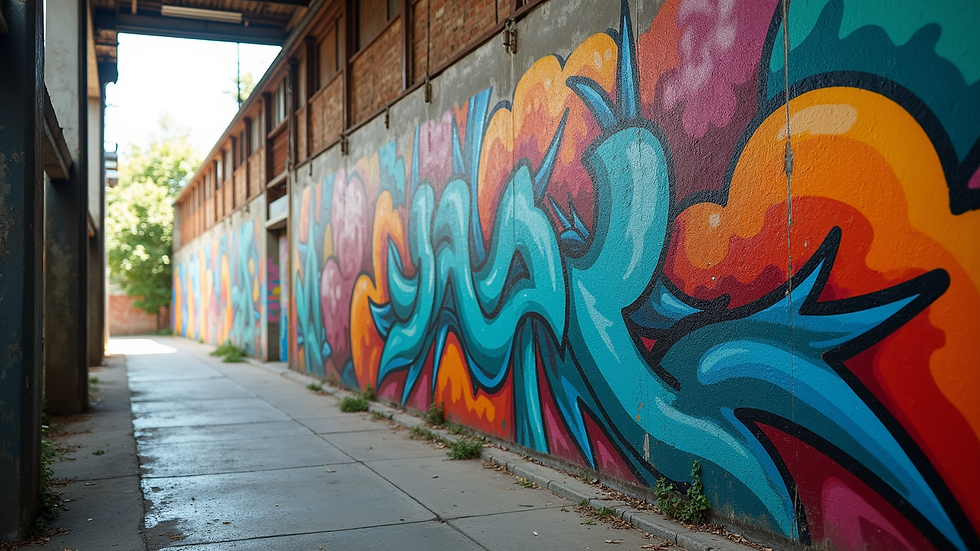30 Years in the Paint Game: Surprising Lessons from the Brush and Bucket
- Ross Jordan

- May 6
- 3 min read
Updated: Jun 24
Stepping into the world of painting and coatings for industrial and commercial spaces thirty years ago, I never imagined the wealth of knowledge I would gain. This journey, shaped by brushes, paint buckets, and countless job sites, has led me to insights that go beyond the technical skills of mixing paint or selecting coatings. Here are some of the most valuable lessons I’ve gathered along the way.

The Value of Quality Materials
One of the first lessons I learned was that not all paints and coatings are the same. Early on, I tried to save money with lower-quality products, which resulted in frequent rework and dissatisfied clients. For example, I used a cheaper exterior paint that faded significantly within just two years. In contrast, a high-quality brand I later switched to retained its color and finish for over five years. Investing in reliable materials enhances durability and improves overall aesthetics, making it worth every cent.
Preparation is Key
Preparation might seem obvious, but it is often overlooked in the hectic pace of projects. Over the years, I have learned that the difference between an average job and an exceptional one often lies in surface preparation. For instance, I once received a complaint about peeling paint shortly after a project was completed. The mistake? Insufficient sanding and priming. Thoroughly cleaning, sanding, and priming surfaces lays the groundwork for a flawless finish. It is one of the most crucial steps in achieving a professional result.
Safety First
Working in industrial spaces brings unique hazards, and safety is non-negotiable. In my years in the field, I have come to appreciate the importance of following safety protocols. For example, one job site required staff to wear respirators due to fumes. Noticing workers neglecting this essential equipment, I took the initiative to enforce compliance. This not only protected their health, but it also created a safer work environment. Each job presents specific risks, and being prepared can prevent accidents and save lives.

Customer Relationships Matter
While technical skills are crucial, fostering relationships with clients is key to sustaining a successful business. Understanding their needs and challenges helps in delivering superior service, which can lead to repeat business and referrals. For example, I once worked with a local factory facing logistical issues. By listening to their concerns, I was able to suggest a tailored solution that not only met their painting needs but also improved their workflow. Such attentive service has proven to be invaluable in building long-term partnerships.
Adaptability is Crucial
The painting industry is in constant flux with new techniques, tools, and materials emerging regularly. Staying relevant requires a willingness to adapt. For instance, I learned about eco-friendly painting solutions to meet rising demand from clients concerned about sustainability. This shift has not only kept my skills sharp but also made my business more competitive. Continuous learning and being open to change are essential for growth in this field.
Eco-Friendly Practices
With growing environmental awareness, sustainability has become a significant focus in our industry. I have come to appreciate the value of using eco-friendly paints and practices. Clients increasingly prefer options that are low in volatile organic compounds (VOCs) and safer for the planet. For example, I now use a brand of paint with 0% VOCs, which has attracted a new demographic of conscious consumers. Embracing these practices not only aligns with environmental goals but also ensures business growth.
Reflecting on My Journey
As I look back on thirty years in the painting game, I recognize how colorful my journey has been, just like the products I use. The lessons I have learned—valuing quality, prioritizing preparation, ensuring safety, nurturing customer relationships, being adaptable, and adopting sustainable practices—are as integral to the trade as paint itself. Whether you are new to the field or a seasoned expert, these insights can guide you in mastering the art of painting in industrial and commercial spaces. Here’s to many more years of learning and creating with every stroke of the brush!


Comments